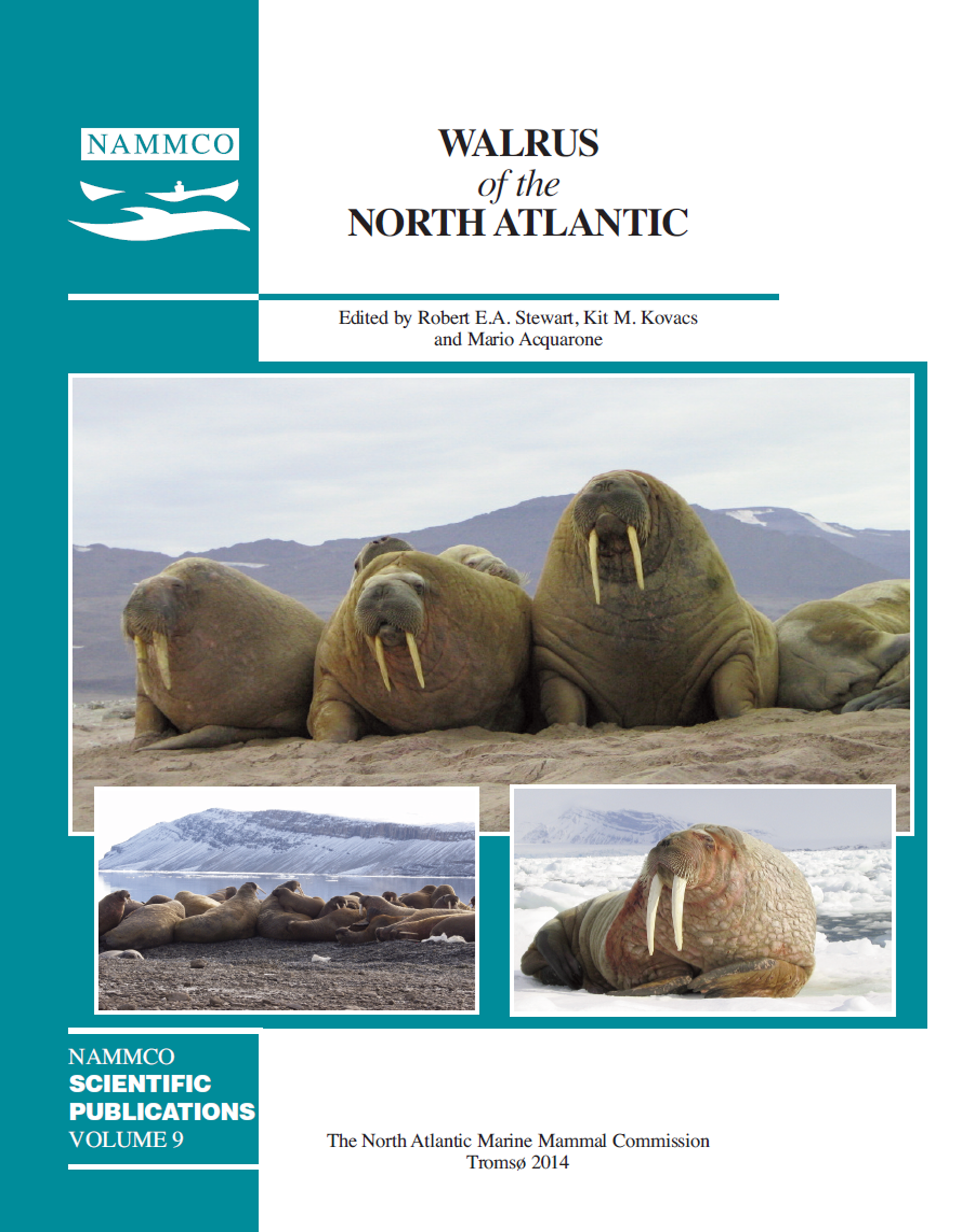Movements of walruses (Odobenus rosmarus) between Central West Greenland and Southeast Baffin Island, 2005-2008
DOI:
https://doi.org/10.7557/3.2605Keywords:
walrus, Odobenus rosmarus, tagging, movementsAbstract
Between 2005 and 2008, 31 walruses were tagged with Argos satellite transmitters at their wintering grounds at Store Hellefiske Banke, Central West Greenland (N=23), and at their summering grounds off the coast of Southeast Baffin Island, Canada (N=8). Two male walruses moved along the Greenland coast from Store Hellefiske Banke north to Disko Banke, where contact was lost. Two other males went further north, up to the Upernavik area. Contact was lost with one of these tags, but the other animal travelled southward again and went towards SE Baffin Island. Eight of the tagged walruses moved between West Greenland and Baffin Island, demonstrating a connection between walruses at these sites. Walruses left the Store Hellefiske Banke during the period 7 April to 17 May and on average used 7 days to swim the 400 km across Davis Strait. The migration routes were quite similar; they travelled over the shallowest areas at the narrowest part of the strait. The timing of the spring dispersal and migration towards Canada was closely linked to the extent and timing of the retreat of the pack ice edge. One flipper tagged male that was marked off South Baffin Island was recovered in a hunt on Store Hellefiske Banke, documenting that the reverse migration also occurs. Off West Greenland satellite tagged walruses spent a lot of time around the Store Hellefiske Banke (55.0o-56.5o W), using this shallow area as feeding grounds irrespective of the ice cover in this area. Partial sexual segregation was observed. Despite a tendency in West Greenland for males to occur farther offshore, farther from the ice edge and at greater depths, only their preference for denser ice cover (64% ice cover) differed significantly (P=0.019) from the habitat preferences of females (52% ice cover). Coast dispersal was more condensed and the segregation between males and females was more pronounced during autumn along the Southeast Baffin Island. Females remained farther north (P<0.001) and farther east (P=0.006), and males were more often located offshore in areas with greater water depths (P=0.024). Males had also had larger home range than females during both seasons.





